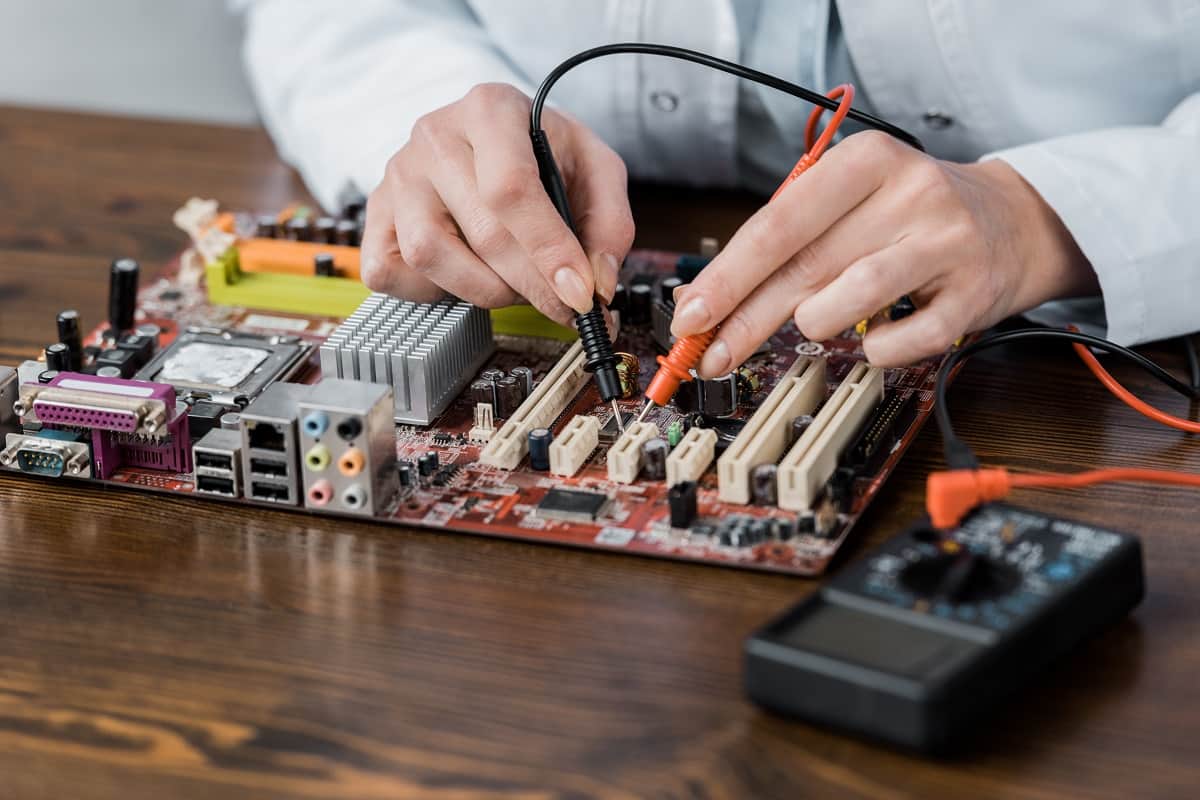On the hunt for a new cleaner?
Then you should compare canister vs upright vacuum cleaners.
While each of these vacuums offers its own unique set of advantages, there are situations in which either would fail to perform. So, only after you know what both of them can – and cannot do – should you decide whether it is a canister or upright vacuum cleaner that deserves your money.
Contents
Canister vs upright vacuum cleaners: Design
To have a proper comparison of canister vs upright vacuum cleaners, first, you need to have a proper intro of both. Only then you should move forward.
Canister vacuum
As suggested by their name, these vacuums have a canister body which – via the hose and plastic tubes – is attached to a powerhead. The canister, in turn, contains a filter, engine, and dust bags. Beneath it is the wheels to turn the unit around.
To push these units around, all you have to do is to push their wand, hence the reason why they are a cinch to maneuver. Also, when it comes to the size of their engine, canister vacuums aren’t constrained by any limitations. That freedom allows them to be more powerful than upright cleaners.
Upright vacuum
In contrast to canister vacuums – whose motor and suction head are located in different parts – upright vacuums have both of them in the same unit. That gives them a more traditional design (and popular) design.
Due to their one-piece design, upright vacuums are easy to store away, since you don’t have to dismount any accessories. Those having a traditional design also means that upright vacuums are the cheaper of the two.
Canister vs upright vacuum cleaners: Features
Now that we’ve seen the design of both vacuums, it’s time we turn our attention to their features. That should let you decide whether to choose a canister or upright vacuum cleaner for your needs.
Where canisters perform better
Weight
Suppressing our desire to delve into technicalities, here’s what you need to know: canister vacuums are lighter than uprights. That means providing you want a vacuum for commercial purposes or stairs, canisters are worth a shot.
That said, the fact that they are lightweight doesn’t mean canisters are featherweight. Instead, if you’re looking for a model loaded with features, expect to lift at least 8 pounds, if not more. Uprights, meanwhile, normally weigh north of 15 pounds.
Maneuverability
When it comes to ease of moving, nothing beats canisters – unless you have a robotic vacuum that moves on its own. That is, because, canisters come with long wands which you have to push to move them around.
That’s right; you don’t need to move the entire unit to move a canister around. All you have to do is to push the wand, and the unit will follow. This feature of the canisters is in stark contrast to the uprights whose heavyweight makes them a pain to move around.
Noise
To their discredit, the motor, filter, and dirtbag of the uprights are all lumped into a single unit. No doubt this feature makes them compact, but it also leaves little room for their manufacturer to install any sound insulation.
Conversely, since canisters have their motor and filter installed in separate units, they have plenty of room for noise insulation. The presence of the insulation equipment makes them much more silent as compared to the uprights.
Suction and flow rate
As a mere glance over both the vacuums would confirm, canister vacuums are the bulkier of the two. While this feature might make them look ugly, it also provides them with more space – which they use to install a more powerful motor.
As a result, when it comes to suction power, upright vacuum cleaners are no match for their more powerful canister counterpart. In practical terms, more suction power means canister vacuums allow for faster and easier cleaning, especially on bare floors.
Attachments
Upright vacuums cleaners – due to their one-piece design – have the same space for their motor, filter, dirtbag, and attachments. Needless to say that this doesn’t leave much space for attachments, which most people already see as optional.
DON’T MISS: 5 Best canister vacuums on the market today
Fortunately for attachment lovers, canisters do not have a shortage of space. For, in addition to the canister itself, they can store tools even on the wand. That allows them to provide a crevice tool for cleaning small spaces, an upholstery tool for sofas, drapes and curtains and a mechanized brush for rugs and carpets.
Where uprights perform better
Price
Unless you are talking about high-end models, then, on average, upright vacuum cleaners tend to be cheaper of the two. However, in case you’re wondering, it isn’t the lack of features/technology which has made them inexpensive.
Instead, uprights are inexpensive because, as stated earlier, they do not normally provide many attachments in the package. So, if you like, you can use the money saved on the model to buy attachments on your own.
Ease of storage
If there is one reason why some people don’t like canisters, it is their difficulty in storage. Especially for those people with limited space, canisters require to be completely dismounted to be put away. So you’d have to spend some time even during their storage.
Luckily, upright vacuum cleaners have no such shenanigans. With no accessories to dismount, you can put them right away the moment you’re done the cleaning. No need to spend any time trying to pluck the wand away from the main unit, which you’d have to do when/if using canisters.
Cleaning path
In case you’re wondering, the cleaning path is the width of the area in which the vacuum’s mouth will clean in one sweep. Obviously, then, the wider the cleaning path, the more space you’ll be able to clean in less time.
So, while we criticize the bulkiness of the uprights – which makes them relatively difficult to maneuver – we should also credit it for giving them a wider cleaning path in comparison with the canisters. This feature will come handy when you’re cleaning straight floors.
Pet hair and capacity
Provided you have pets at home – and if you can afford to spend extra, get a dedicated Pet vacuum. However, if you can’t afford it, the next best option is the uprights. Available with mini turbo tools and brushes, uprights are the best when it comes to picking after your furry friend.
Secondly, while these models are no doubt heavy, that’s due to their bigger cleaning cup capacity. That’s right; upright vacuums cleaners hold more dirt than canisters. As a result, you’d have to less frequently empty their bags.
Operating ease
Three features make the uprights relatively easy to operate. First, they come with a foot pedal which lets you control their transition. Put simply, if you’re transitioning between, let’s say, carpets and bare floors, all you have to do is to just tap the pedal with your foot.
Second, uprights don’t require you to mount/dismount any accessories before using them. That means you can use them without any prior preparations.
Finally, thanks to their upright design, these models won’t require you to bend, unless you’re using a hose attachment. So people who have back problems can use them with minimum fuss.
Canister vs upright vacuum cleaners: Surfaces
Have difficulty deciding whether you need a canister or upright vacuum for carpet? Don’t know whether to use a canister or upright vacuum for hardwood floors?
To answer these – and similar other questions – this section will help you out.
Hardwood floors
Are canister vacuums better for hardwood floors? To answer this question, first, we need to know what types of vacuums are best for hardwood floors.
Hardwood floors require a vacuum to have huge suction power so that it could suck up dust without dispersing it. Also, the wheels on the vacuum need to be padded so as to not leave behind scratch marks. And finally, the vacuum should have attachments to get into tight spaces.
Just scroll back to the features section, and you’d see that canister vacuums have all these features.
Not only do they have huge suction power, but they also have padded wheels. At the same time, since they have a narrow cleaning path, these vacuums are less likely to disperse dust and dander while vacuuming on hardwood floors. Also, these vacuums come with loads of attachments, hence making them perfect for hardwood floors.
Carpet
Unlike hardwood floors – which have dust and debris on their surface – carpets have dirt embedded deep between their fibers. As a result, even multiple vigorous sweeps of your ordinary vacuum won’t be able to get this dirt out.
What you need, instead, is a beater bar – a feature available only with uprights. This tool agitates the carpet to force it to loosen its grip over deeply embedded dirt. Consequently, once the dust comes out, the upright makes short work of it.
Stairs
Stairs have a peculiar geometry which turns them into hostile territory for uprights. For, not only are the uprights ridiculously heavy, they aren’t the easiest to maneuver. At the same time, they don’t come with attachments which are a must if you want to clean those nooks and crevices.
Therefore, if you want the best vacuum cleaner for stairs, get yourself a canister. These lightweight models come with lots of attachments – like crevice tools – which make stair cleaning a cinch. Also, since they are easy to maneuver, you won’t have any trouble a lugging them up and down the staircase.
Canister vs upright vacuum cleaners: Final choice
You have now seen a comparison of canister vs upright vacuum cleaners on all possible indicators. Therefore, now is the time that you make your final choice.
Choose an upright vacuum cleaner if:
- You have to clean carpets, rugs and open spaces
- You want an inexpensive option to pick up after your furry friend
- You do not want to empty the dirt cup during a vacuuming session
- You need a model which occupies as less storage space as possible
- You want to clean more area in less time
Choose a canister vacuum cleaner if:
- You live in a house with stairs or one with hardwood floors
- You want to clean beneath, around and above furniture and upholstery
- You want your model to operate quietly
- Your ideal vacuum is one that is lightweight and easy to maneuver around
- You can afford to make up a considerable amount of storage space for your vac
Jim Powell
Jim is our staff editor and writer. He has a degree in engineering. His hobbies are radio engineering and new technologies about which he has been writing for more than 7 years.



